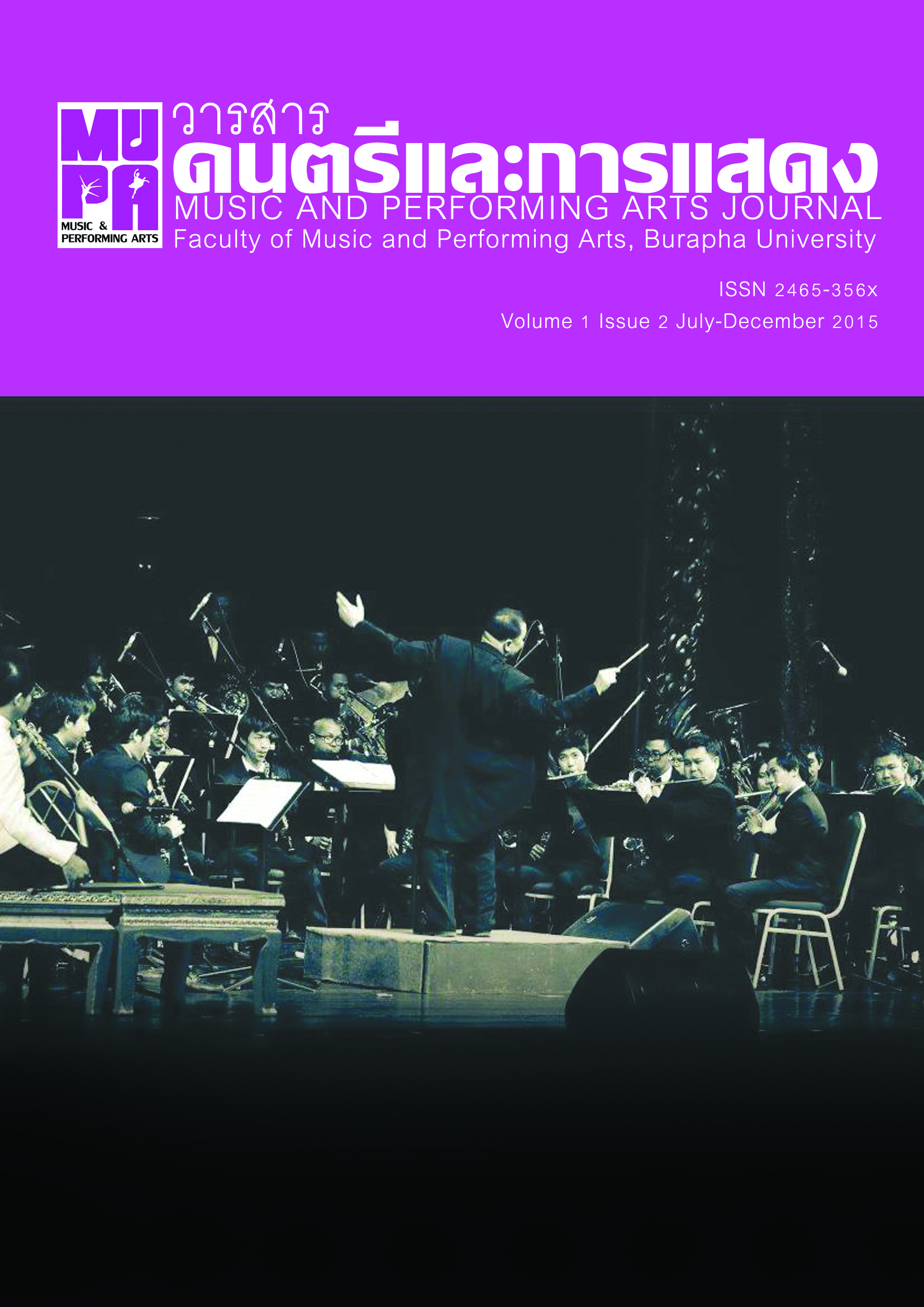Comparing Material, Performance, Transmission, and Preservation Traditions in Three Nose Flute Cultures
คำสำคัญ:
ethnomusicology, nose flute, pensol, paringet, Ohe Hano Ihu, Malaysian traditional music, Taiwanese traditional music, Hawaiian traditional music, endangered musical formsบทคัดย่อ
Nose flute cultures are struggling to survive in different parts of the world, and variations among regionsʼ materials, performance, and transmission conventions may affect the instrumentsʼ local preservation. For this study, the researcher traveled to Malaysia, Taiwan, and Hawaii and spoke with makers and players of three nose flutes: the pensol (peninsular Malaysia), the paringet (Taiwan), and the Ohe Hano Ihu (Hawaii). The study identifies differences and similarities in the studied nose flute cultures, including materials, performance, and transmission, and discusses how these are affecting preservation efforts, especially in ethnic minority cultures on the brink of rapid cultural change. In each location, the researcher gathered qualitative data by interviewing local experts regarding their flutes, including their instrumentsʼ construction, performance methods, and approaches to transmission. With urbanization and other global forces affecting younger generations in indigenous communities where traditional musical forms once flourished, nose flutes are being played less frequently today. To help ensure the continuance of nose flute culture, some are advocating for nose flute performance to be transmitted to young people as part of their formal education. But, as this research shows, regional beliefs and taboos sometimes stand in the way of incorporating new methods of transmission. Taken together with modern educators’ lack of interest in including traditional musical practices in today’s curriculum, the preservation of nose flute culture beyond the generations of players interviewed in this study is far from ensured. The research seeks to deepen scholarsʼ understanding of nose flute cultures and underline the importance of working with the people of the studied cultures to find ways to preserve nose flute performance traditions.



